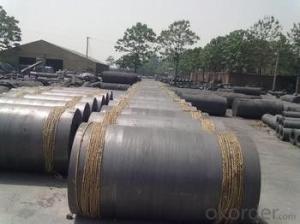Graphite electrodes, those slender yet robust components, are the unsung heroes in the world of metallurgy and electric arc furnaces. They play a pivotal role in the production of steel, a process that’s as ancient as it is modern. But what makes these graphite wonders tick? What’s the economic story behind their pricing? Let’s dive into the world of graphite electrode economics with a pinch of curiosity and a dash of enthusiasm.
First off, the journey of a graphite electrode begins with its raw materials. Natural flake graphite and synthetic graphite are the primary feedstocks, sourced from various corners of the globe. The quality and availability of these materials significantly influence the cost. It’s a tale of supply and demand, where the rarity of high-quality graphite can send prices soaring.
Next, we’ve got the production process, a symphony of heat and pressure that transforms raw materials into usable electrodes. This process is energy-intensive, and the cost of electricity is no small factor. Imagine the electric bills! It’s enough to make your eyes water. And then there’s the skilled labor, the technology, and the maintenance of equipment – all adding to the production cost.
But it’s not just about the production cost. The market dynamics are a crucial part of the pricing puzzle. The demand for steel, which is directly linked to the demand for graphite electrodes, fluctuates with the global economy. When the economy is booming, the construction industry is on a high, and so is the demand for steel – and consequently, for graphite electrodes. Conversely, during an economic downturn, the demand drops, and so does the price of our beloved electrodes.
Now, let’s talk about the giants in the game – the major graphite electrode producers. These companies have a significant impact on the market, often setting the trends and prices. Their production capacity, technological advancements, and strategic decisions can create ripples in the market, affecting the pricing of graphite electrodes.
And what about the role of recycling? It’s a growing trend in the graphite electrode industry. Used electrodes can be recycled, reducing the need for raw materials and, in turn, the production cost. It’s a win-win situation for both the environment and the industry’s pocketbook.
But here’s the kicker – the price of graphite electrodes isn’t set in stone. It’s subject to a myriad of factors, including geopolitical events, trade policies, and even environmental regulations. These factors can create a whirlwind of changes in the market, making it a challenging landscape for both producers and consumers.
In conclusion, the pricing of graphite electrodes is a complex interplay of raw material costs, production processes, market dynamics, industry players, and external factors. It’s a story of economics, strategy, and a bit of luck. So, the next time you see a graphite electrode, remember the intricate dance of factors that determine its value. And who knows? You might just find yourself appreciating these unsung heroes a little more.

